
Do you have a question about the Kohler Command Pro ECV880 and is the answer not in the manual?
Details critical hazards: fuel, rotating parts, hot surfaces, exhaust, electrical shock, high-pressure fluids, and chemical risks.
Outlines the procedure for disabling the engine before performing any maintenance or service.
Lists required maintenance tasks based on operating hours or annually, including oil changes and filter replacements.
Information on acquiring genuine Kohler service parts and locating authorized dealers.
Recommends specific oil types and viscosities based on ambient operating temperature.
Specifies requirements for clean, fresh, unleaded gasoline, including octane rating and ethanol content.
Provides instructions for storing the engine for two months or more, covering fuel treatment and oil changes.
Detailed measurements and labels for engine sides: flywheel, oil filter, PTO end, and valve cover.
Explains how to reference engine identification numbers for repair and ordering.
Key engine parameters: bore, stroke, displacement, oil capacity, and max operating angle.
Lists recommended torque values for engine fasteners, covering various components and sizes.
Provides critical clearance measurements for engine components like camshaft, rods, and cylinder bores.
Offers standard torque recommendations for English and Metric fasteners by size and material.
Lists specialized tools, kits, aids for servicing, DIY options, and lubricants.
Provides a general guide to diagnosing common engine problems and their potential causes.
Covers common problems when the engine fails to crank, cranks but won't start, or starts hard.
Addresses issues like engine missing, stalling, overheating, knocking, and loss of power.
Details procedures for testing crankcase vacuum, compression, and cylinder leakdown.
Instructions for inspecting, cleaning, and replacing the air cleaner element and housing.
Ensures proper connection of the breather tube for engine ventilation.
Highlights the importance of proper cooling and cleaning to prevent engine overheating.
Lists typical EFI system components: fuel system, ECU, sensors, and injectors.
Explains how EFI manages engine speed, fuel delivery, and ignition timing for optimal performance.
Provides important notes and safety precautions for servicing the EFI system.
Details the pin assignments for the Electronic Control Unit (ECU) connectors.
Illustrates wiring for electronic and mechanical governor systems within the EFI setup.
Provides diagnostic procedures for sensors: Crankshaft Position, TPS, Oil Temp, and TMAP.
Lists diagnostic fault codes, descriptions, and potential causes for EFI system malfunctions.
Offers flowcharts and diagnostic aids to systematically troubleshoot EFI system issues.
Details components like DLA, GCU, and linkage, and their basic operation.
Covers testing, fault codes, and troubleshooting flowcharts for the electronic governor.
Explains the operation of the mechanical governor, its components, and how it works.
Provides procedures for initial adjustment and setting of the mechanical governor.
Identifies key lubrication system components: oil filter, cooler, and sensors.
Details how to check the oil level and perform an oil and filter change.
Covers servicing and testing of the optional oil cooler and Oil Sentry pressure switch.
Covers spark plug inspection, service, and replacement procedures.
Details battery requirements, maintenance, testing, and the 20/25 Amp charging system.
Provides guidance for diagnosing charging system issues, including stator and rectifier-regulator.
Explains fuse identification, ratings, and replacement procedures for the engine's electrical system.
Guides diagnosis of starting problems related to battery, wiring, and engine.
Details solenoid shift starter components and provides steps for disassembly and inspection.
Covers starter reassembly procedures and tests for solenoid coils.
Identifies and details the removal of external engine components for service.
Procedures for disconnecting fuel lines, removing fuel pump module, and servicing related components.
Details removal of governor linkages, manifold assembly, oil cooler, and internal engine parts.
Covers removal, disassembly, and inspection of cylinder heads, valves, and valve train.
Procedures for removing, inspecting, and servicing pistons, rings, connecting rods, and crankshaft.
Details disassembly and service procedures for EFI components: throttle body, injectors, and sensors.
Guides reassembly of internal engine parts: crankshaft, connecting rods, pistons, and camshaft.
Covers cylinder head reassembly, valves, rocker arms, and valve clearance adjustment.
Details reassembly of external components: valve covers, breather, baffles, stator, and flywheel.
Instructions for reinstalling EFI components, fuel pump module, and governor linkages.
Covers final assembly steps, fluid fills, spark plug installation, and initial engine testing.
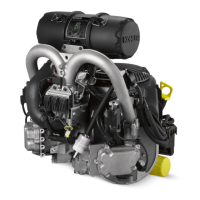


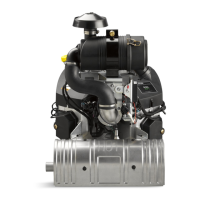

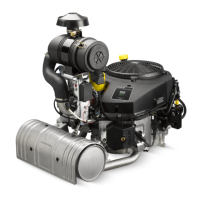
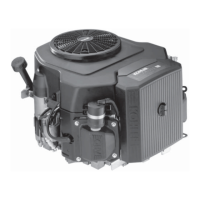

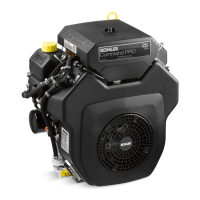

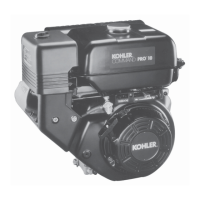
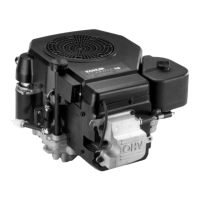
